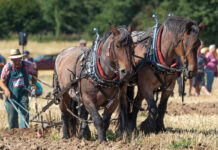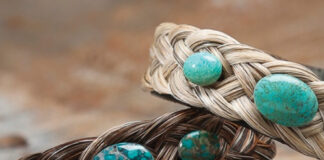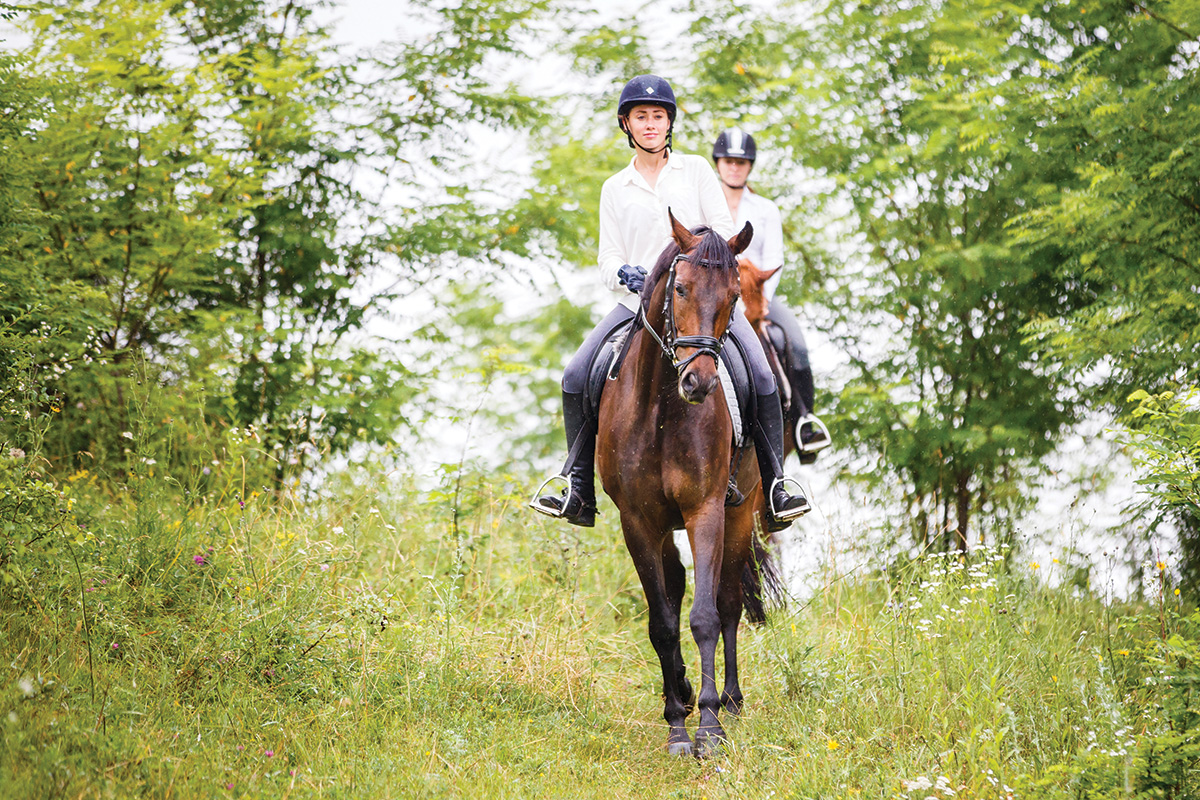
Developing a strong core is a popular focus in fitness these days, for both horse and rider. The benefits touted are less back pain, better posture, greater mobility, and increased athleticism. Plus, who doesn’t want a whittled waist and six-pack abs?
And we know the drill to get there, right? Crunches, curls and planks for us humans. Belly lifts, carrot stretches and asking for collection and frequent transitions while riding our horses.
But what if becoming a better, more balanced rider and helping our horse develop athletically and stay sound was not about core strength, but rather about core stability?
Strength vs. Stability
Core strength is training the abdominal muscles to perform certain demands, like holding a static plank position for several minutes, doing hundreds of crunches or sit-ups, or keeping your abs tight throughout the day.
The next time you go for a ride, tighten your core as much as you can. Likely you’ll feel unbalanced and unable to absorb your horse’s movement. Plus, how long can you hold that deep core contraction and still breathe and cue your horse? This is riding from core strength.
“We do need a certain level of core strength for everyday living,” explains Wendy Murdoch, renowned riding coach, author, and expert in human and equine biomechanics and connection.
“However, developing six-pack abs is not needed if our goal is to be better riders. In fact, if good riding were about the sheer strength of our abdominal muscles, then little kids couldn’t ride at all, and some ride extremely well.”
Core stability, on the other hand, involves dynamic movement.
“It’s the ability of the core muscles to work in an efficient and coordinated fashion to maintain correct alignment of the spine and pelvis while the limbs are moving,” Murdoch explains.
It’s this combination of dynamic strength and movement that are key to core stability—and good riding.
Signs of Instability
Here are some signs that you and your horse are not moving with core stability.
Human:
◆ Bracing against the stirrups or forcing the heels down
◆ Pushing the stirrup leather out of a plumb vertical line
◆ Pitching forward at the hips
◆ Not being able to stay with the motion of the horse
◆ Relying on the reins to maintain balance
◆ Gripping with the legs
All these result from bracing in the core muscles and elsewhere in an attempt to maintain balance, rather than from allowing soft joints to absorb the movement of the horse.
Horse:
◆ Out of balance
◆ High-headed
◆ Rushing
◆ Falling in on circles
◆ Difficulty controlling speed
◆ Stiff
◆ Resistant
◆ Fearful
These often occur because the horse is trying to negotiate the task but doesn’t have the flexibility in his joints or stability in his torso to carry the weight of a rider.
The key to building core stability is adding the element of instability in movement.
“Our ability to stay upright and in balance while riding is the result of our large and small muscles firing at the right time, while our joints are supple to allow and follow motion from our horse,” explains Murdoch.
To help us create a solid foundation of core stability, she offers these suggestions.
Core Stability Exercises
Because human and horse anatomy is so similar, we can both benefit from similar exercises and movements. One of the best, and most fun, activities that will benefit both you and your horse is going for walks on varied terrain: up and down hills, walking over logs, negotiating rocks on the trail, and so on.
“The instability under your feet allows the large and small muscles to work and become stronger,” says Murdoch. “At the same time, you’re developing your proprioception of knowing where your body is in space.”
Here are some additional options to try. For humans and horses, the key point is to start with small, slow movement and build in dynamic movement that challenges balance and activates the small postural muscles.
For the Human:
◆ Standing on a balance board, BOSU ball, or SURE FOOT pad (sold by Wendy Murdoch)
◆ Stand-up paddleboarding
◆ Hula hooping
◆ Jumping on a trampoline
◆ Doing yoga poses that challenge balance
◆ Using the Anywhere Saddle Chair instead of a desk chair (sold by Wendy Murdoch)
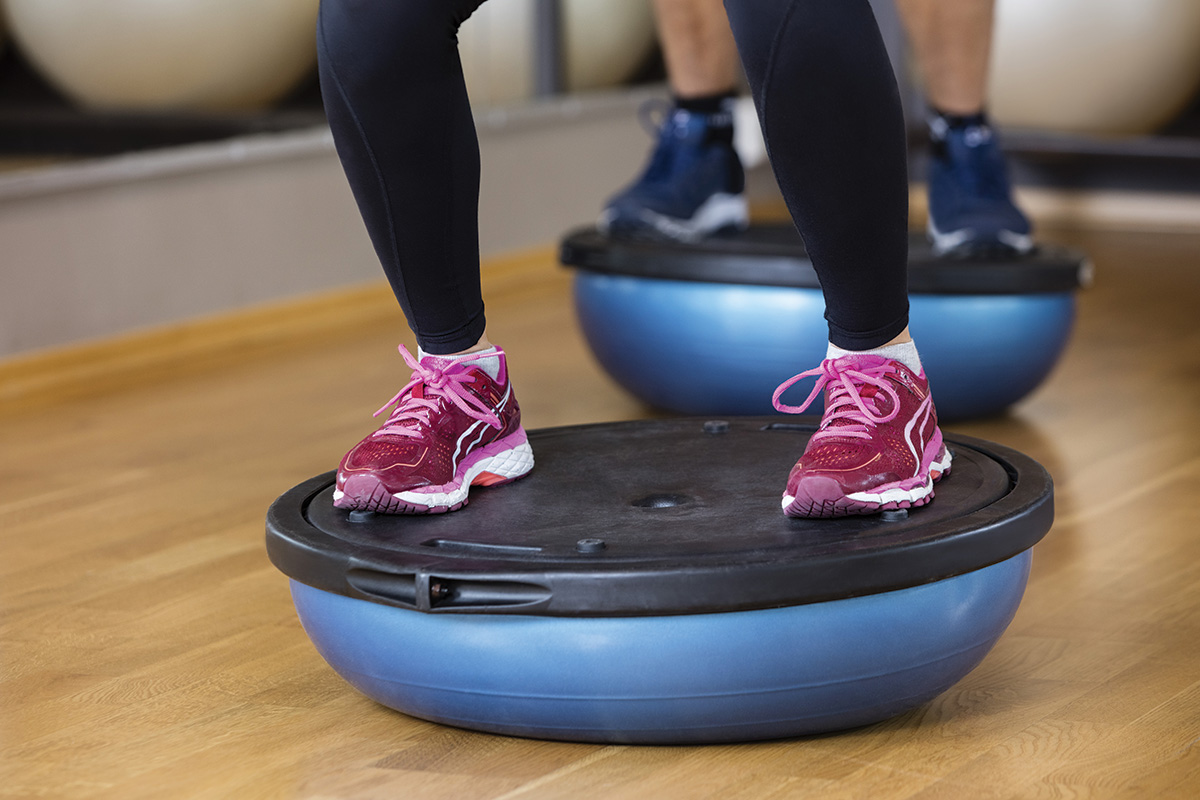
For the Horse:
◆ Try non-habitual movements, such as those from Linda Tellington-Jones, whose system of circular touches allow the nervous system to learn much more quickly than through repetition of movement.
◆ SURE FOOT Equine Stability Program and pads: These challenge proprioception and balance as the horse activates different muscles and learns new ways of maintaining stability.
◆ Dynamic stretches, such as those from Activate Your Horse’s Core, the book by Hilary Clayton, BVMS, Ph.D., Dipl. ACVSMR, FRCVS.
◆ Groundwork: Explore slow, quiet ground work to become aware of how your horse is moving and his alignment. Start by walking over poles, allowing his neck to relax and lower, then try turns and more complex movements with your horse staying soft in his body. One approach is Peggy Cummings’ Connected Groundwork.
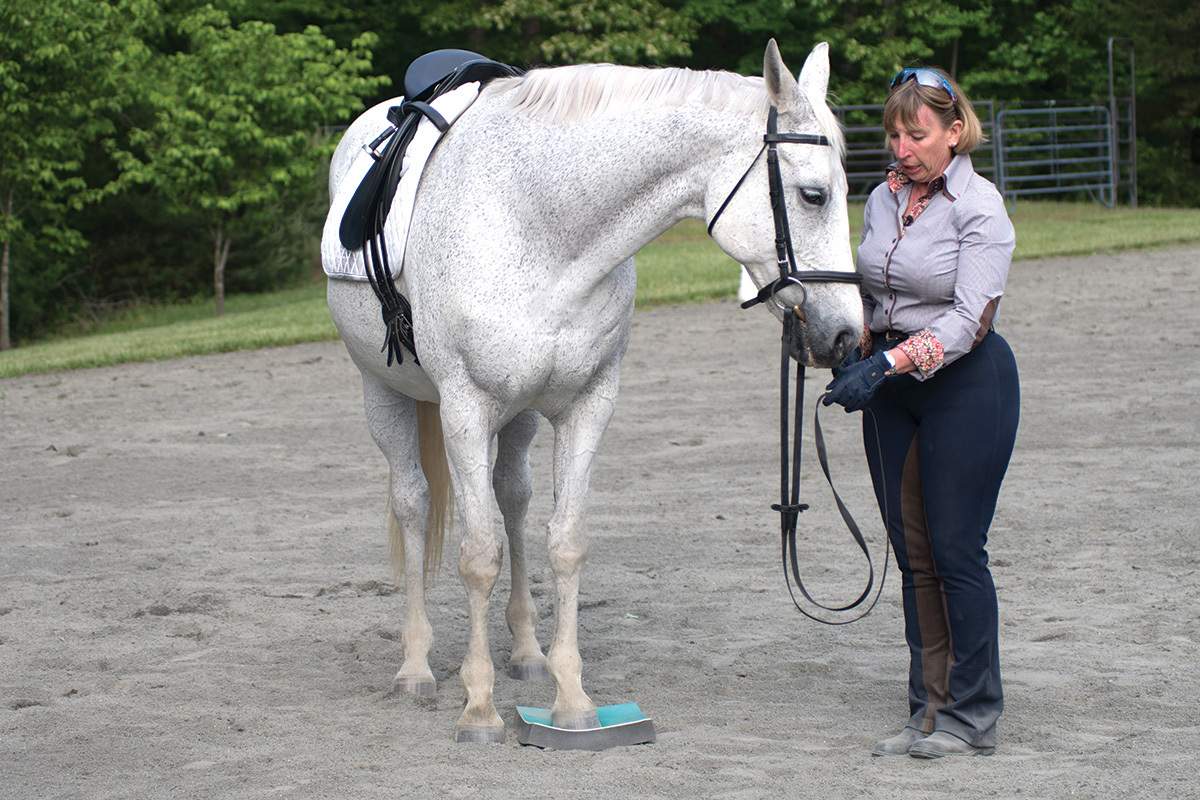
Get Set for Core Stability
Core stability is a gateway for you and your horse to learn to move freely, improve function and deepen your partnership.
“After all, the point of riding isn’t about overpowering your horse with rock-hard abs,” says Murdoch. “Rather, it’s guiding and signaling your horse as you move together in harmony, and helping your horse develop the athletic ability to carry you in dynamic movement.”
No crunches or belly lifts required.
This article about core stability for horse and rider appeared in the April 2022 issue of Horse Illustrated magazine. Click here to subscribe!



